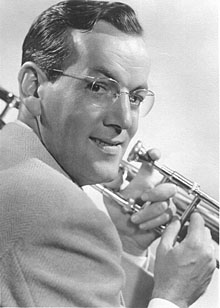
The story of the band begins in 1942, just months after America entered the war. At age 38, Miller was too old to be drafted but still wanted to enlist. So he wrote a letter to Army Brigadier General Charles Young asking to be put in charge of an Army band. His request was granted, and Miller's civilian band performed its last concert in late September.
In 1943, Miller was transferred to Atlantic City, N.J., where many soldier-musicians received basic training. The musicians Miller cherry-picked for his next band were sent to Yale University in New Haven, where Miller rehearsed them between March and May.
The radio show lasted a year, and in the spring of 1944 Miller's expanded band was sent to England. According to Simon, the orchestra that shipped out included 20 string players, five trumpets, four trombones (not including Miller), a French horn, six reeds, two drummers, two pianists, two bassists, a guitarist, three arrangers, a copyist, five singers, two producers, an announcer, two administrators and two musical instrument repairmen.
Upon re-listening to many of the Army Air Force Band's recordings today, one is struck by its taut efficiency, nostalgic swing and polished orchestrations. This was no jazz band in the traditional sense, but it was mighty regal and pretty—shifting smoothly between emotionally moving passages and up-tempo swing with a military crispness. There also was a more future-forward sound to the arrangements compared with those written for Miller's civilian band.
JazzWax tracks: There are several excellent compilations of
If you want more, I recommend
JazzWax clip: Here's footage of Glenn Miller's Army Air Force Band in England in July 1944. The music is dubbed from the concert, but at least you get a sense of what the band looked like...
This story appears courtesy of JazzWax by Marc Myers.
Copyright © 2024. All rights reserved.



























